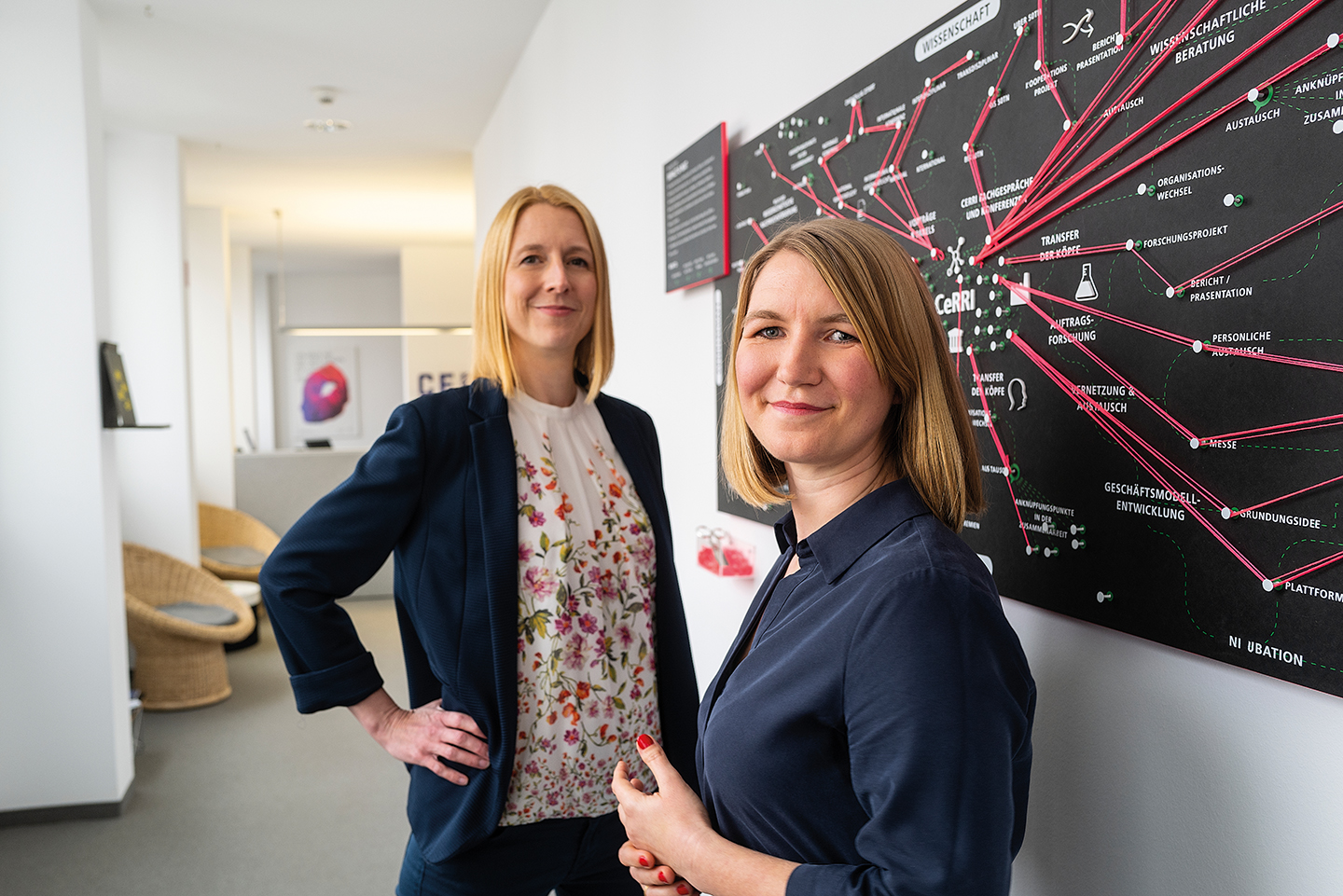A new leadership duo

How will we work in the future? This is a question that Simone Kaiser and Katharina Hochfeld have been trying to answer for some time at Fraunhofer IAO. Since September, they have jointly headed the Center for Responsible Research and Innovation CeRRI in Berlin.
Every morning, Hochfeld and Kaiser sit down together and take a quick look at the day ahead of them, coordinating appointments, projects, decisions, etc. — a set routine that they do not want to miss. Before the pandemic, they used to use the journey to their office next to the Berlin Zoological Garden for this purpose. Since they now often work from home, they call each other on the way to the daycare center or school, or have a meeting on the computer early in the morning. This regular, close cooperation is crucial for dual leadership. It not only gives the day structure but is a clear signal to others that the leadership duo act as one entity. They are both always informed of all matters.
Since September 1, 2021, both researchers have headed the Center for Responsible Research and Innovation CeRRI, a branch office of Fraunhofer IAO in Berlin. It is the first time that joint leadership has been implemented at Fraunhofer IAO — making the pair pioneers of this model. “For us, it is exciting to finally be able to make the dual leadership construct come alive after we advocated for it internally,” says Hochfeld. “Not least because it fits perfectly with CeRRI’s mission of developing new ideas for the changing world of work and shaping this in a responsible way,” adds Kaiser. This is applied research at its best.
Hochfeld and Kaiser first got to know each other 15 years ago — back then, they were working for the same company but in different departments. At some point, they went their separate ways professionally, but kept in contact. It was in 2010 when they crossed paths again at Fraunhofer, where a new research group had been formed. At first, they shared responsibility for technical matters, but as the group grew, each assumed leadership of their own team: While Hochfeld studied organizations and their structures, processes and work cultures to help them with their transformation processes, Kaiser investigated how innovation processes could be designed based on societal challenges and needs. When a vacancy for a deputy leadership position opened up almost four years ago, they joined forces again — preparation for their current role. Their department currently comprises around 20 people, split into three teams — two of which they manage themselves.
Both researchers believe that their combined experience and close cooperation are a decisive advantage of joint leadership. “The world today is more complex, faster and more interdependent. You have to take many factors into account in your strategic considerations and that’s where having double the expertise really makes a difference,” explains Hochfeld. When it comes to deciding whether CeRRI should participate in a call for tenders, questions arise such as: Do we want to? Do we have the resources? What can be reorganized? “In such cases, you have to weigh it up. That’s when it’s good to have a second perspective — someone to question and challenge you. It ultimately leads to better results.”
Trust is indispensable in this arrangement. This not only relates to the flow of information between them, which is very transparent: All leadership-relevant information goes straight to a shared drive and the pair also keep each other informed in the interim by adding small notes. There is also no rivalry. “We trust that the other person’s decision is just as good as ours and push each other to always be better,” says Kaiser.
Looking to the future, the researchers want more scope for action and in-person meetings. At the moment, there are still a lot of restrictions at work due to the pandemic. “As soon as this phase is over, we can start to think about how we want to work in the future, for example how we can achieve the right balance between working from home and going to the office,” says Hochfeld. “We are really keen to shake things up again.”